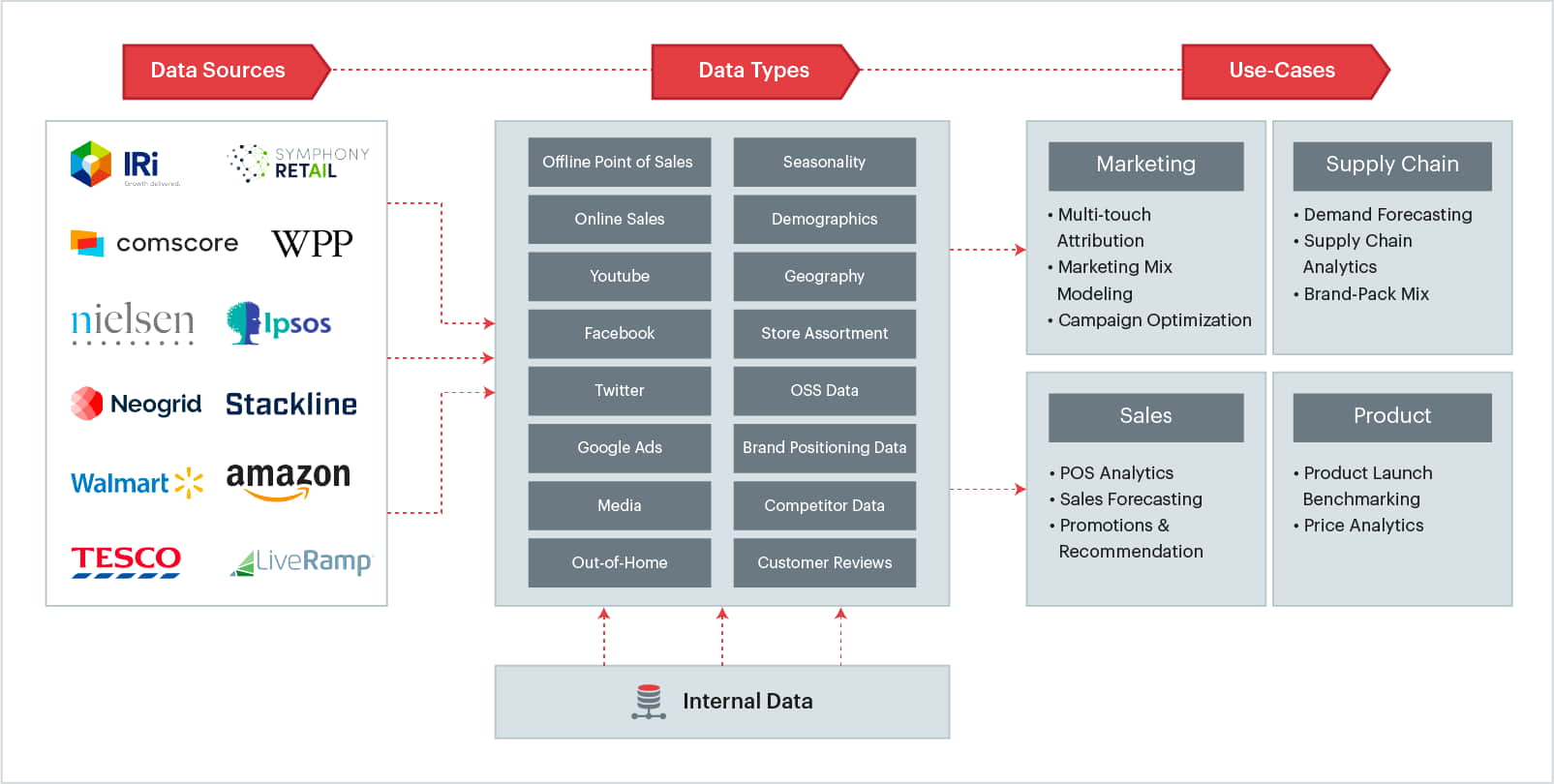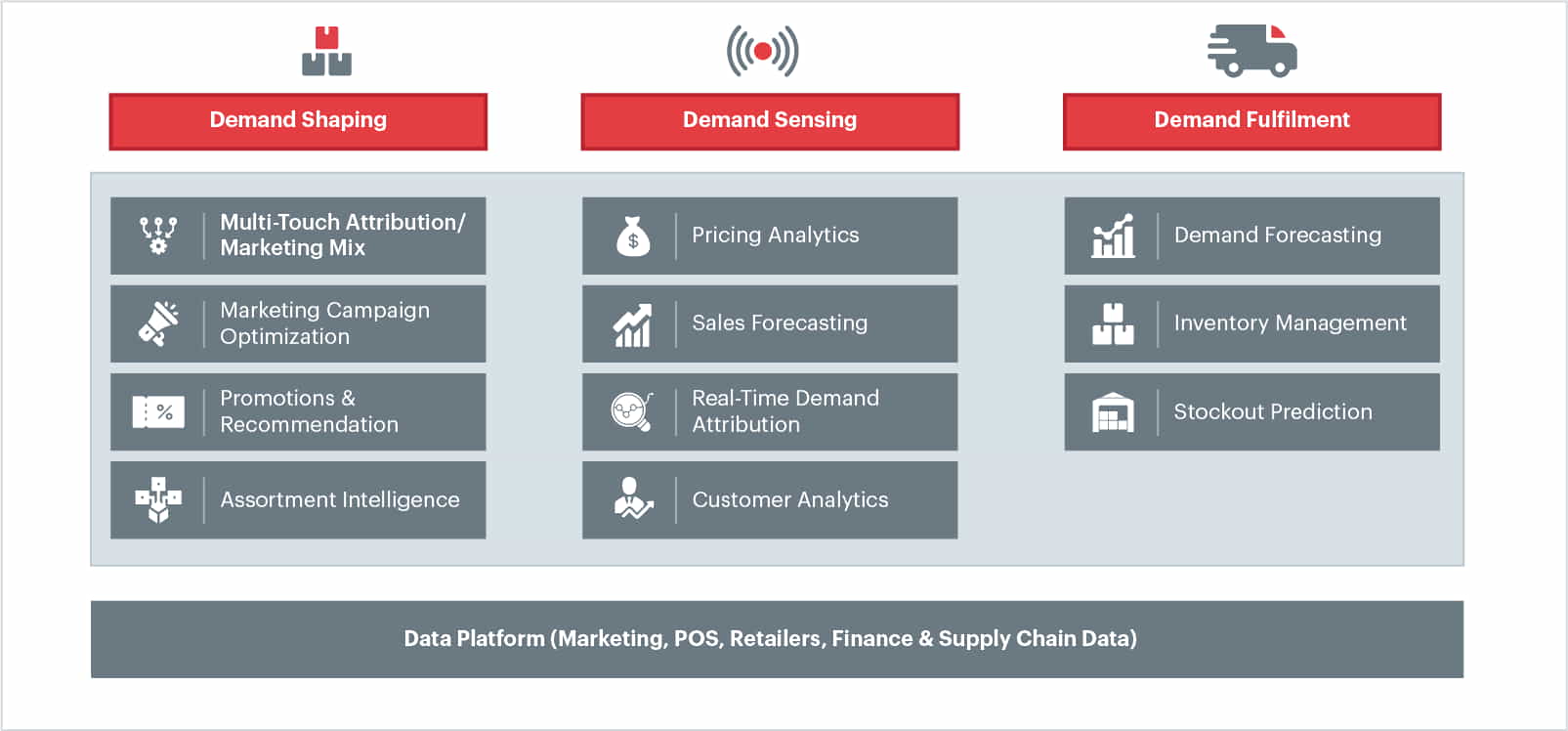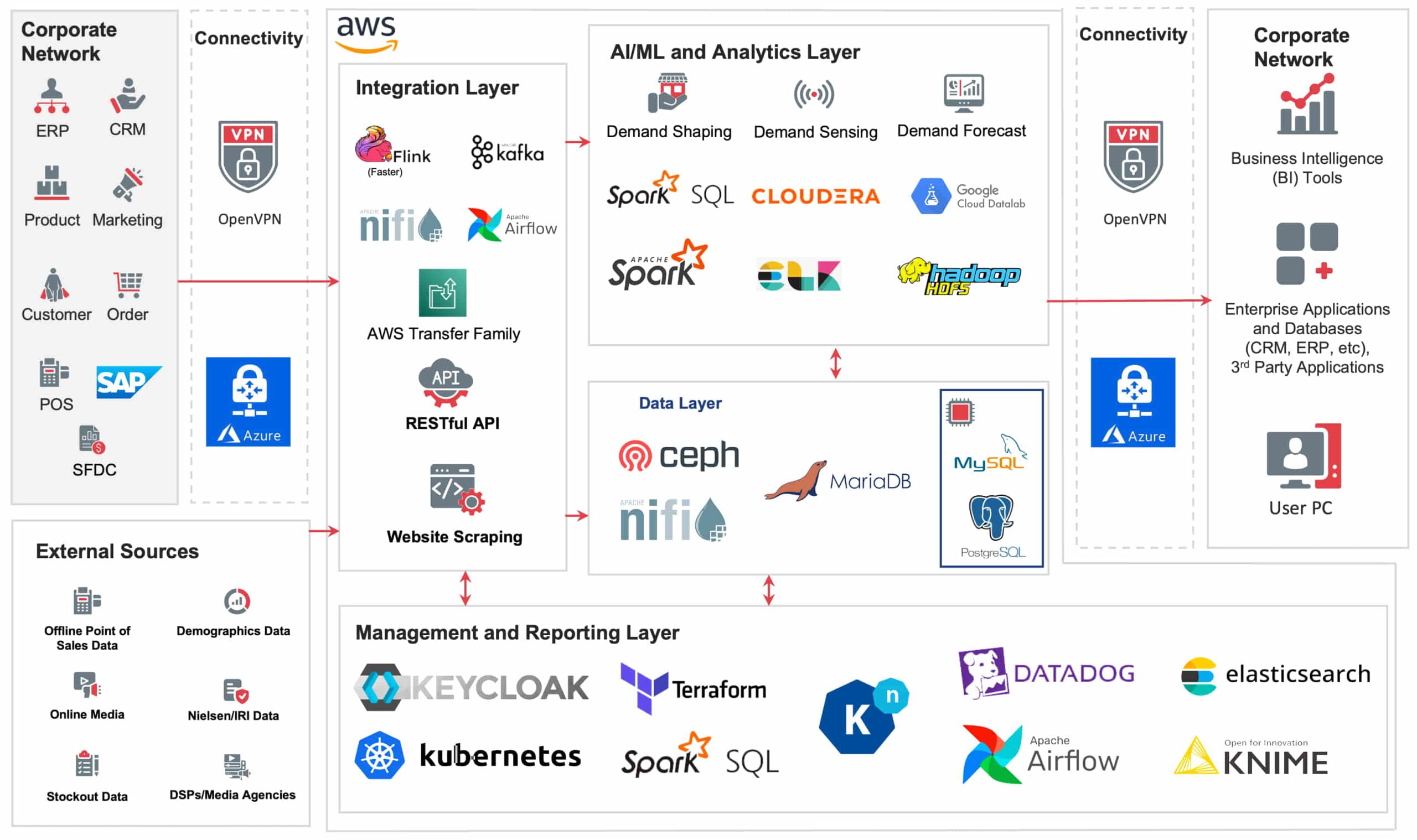Data-driven revenue growth management for CPGs
Reading Time: 6 minutes

Consumer Packaged Goods (CPG) companies are undergoing massive transformation on multiple fronts — changing consumer behavior, new supply chain practices, increasing competition to name a few. A recent survey with CPG leaders whose companies underwent a transformation in the past five years found that 95% of transformations utilized one or more revenue growth levers such as pricing, promotion management, brand positioning, to name a few.
Revenue growth management can be defined as the increase in revenue due to the availability of the right brand/pack/brand-pack mix to the right consumer at the right price on the right occasion. Traditionally, core RGM strategies have been tactical and reactional, for example, adjusting price based on consumer price elasticities, shifting trade investments towards higher-growth categories, or discounting selected brands on special occasions. However, due to disruptions caused by COVID, several factors need to be considered to create an RGM solution that enables the overall CPG commercial strategy.
Overcoming roadblocks to reap the benefits of RGM
CPG companies have come a long way in capturing the full value of revenue as growth drivers. They are realizing the importance of capturing granular details such as understanding of the return on investment on promotions or the influence of promotions on customer behavior. However, the fast-evolving market and trends requires CPGs to overcome a few roadblocks to fully adopt RGM in their growth strategy.
- The rise in Direct-To-Consumer (DTC) eCommerce: eCommerce is creating a massive price management challenge. According to a study, US consumers plan to continue spending more of their money online even after the COVID-19 crisis subsides. There is a 20 to 40 percent increase in net intent to shop online post-COVID-19 across all categories. For CPGs, living the eCommerce way and seeing less foot traffic to the brick & mortar stores becomes a little complex from traditional pricing, marketing, and assortments perspective.
- Disruptions in the supply chain: Pandemic has posed some interesting challenges with spikes in demands for certain brands. A study suggests that in 2020, wages and labor costs in manufacturing increased substantially — from 5 to 20 percent — as a result of COVID-19 causing pay and overtime increases. These are expected to stay high in 2021 and beyond. Warehousing, on the other hand, has also become more expensive because of higher labor costs and is expected to remain at higher levels in the future as well.
- New entrants and competition: With the advent of the digital era, there has been a gradual increment in incumbents with attractive pricing strategies. Moreover, global eCommerce at the consumer level has skewed the markets for certain brands.
How is analytics-driven RGM changing the CPG landscape
While most CPGs have used rudimentary analytics to improve customer acquisition and segmentation or optimize their marketing mix, advanced analytics-driven RGM solutions can help CPGs to boost sales margin drastically. It can help them achieve their true potential across product categories, brands, sales channels, and markets.
With advances in data availability and AI algorithms, CPGs can run a continuous RGM platform to make the most of these insights to give recommendations or enable optimization of promotion plans.
Case study: One of the biggest challenges for CPGs is to build data pipelines from disparate data sources and store them in a data lake platform. Sigmoid, a leading data, and AI solutions company, enabled an American multinational consumer products company to create a data lake and a ring of purpose-built solutions around the lake allowing them to make decisions with speed and agility, at scale with affordable price and desired performance.

Fig 1: Data Platforms for CPGs
Some of the interesting use-cases that could be realized using this RGM platform are:
- Return on Marketing Investment (ROMI): For marketers, accessing data at a granular level across different marketing channels is crucial to understanding the ROI of marketing campaigns. This platform can help marketers optimize marketing campaigns and shape demand for a particular brand/pack.
- Forecasting demands of different brands/packs: Forecasting the demand of different brands/packs is important for retailers/e-tailers to ensure the availability of these inventories in their stores/online channels. Now that CPGs are going with DTC, demand forecasting per channel also becomes more critical. It can help CPGs to ensure that they meet delivery cycles or the On-Time-In-Full (OTIF) mandate so that products are always available on the shelf to fulfill consumers’ demands.
- Pricing and Promotions: One of the most popular ways to boost and shape demand is making the right bundle, promoting and recommending the right brands/packs at the right price, and keeping an eye on the price elasticity of each brand segment. According to a study, some CPG companies invest up to 20 percent of their gross revenues on promotions, making it one of the largest items on their profit and loss (P&L).
- Customer Analytics: While it is important to acquire new consumers, it is also imperative to understand the challenges that existing ones are facing to reduce churn rates.
Impacts of data-driven revenue growth management on demand generation
Revenue growth management can impact CPGs across three major dimensions — demand shaping, demand sensing, and demand fulfillment — which are detailed in the following section.

Fig 2: Key use-cases under RGM
Demand Shaping
Demand shaping activities are employed by CPGs across marketing tactics like promotions, new product launches, digital recommendations on DTC channels, dynamic marketing campaigns on various channels, etc. to entice consumers to purchase products. Demand shaping is crucial for companies to influence the demand of a certain product to match its planned supply.
Companies can use several optimization techniques to get the best ROI from demand shaping marketing activities. They can create niche ML models using tools such as Amazon SageMaker, Scikit-learn, XGBoost, and others, for campaign optimization, promotions, and recommendations. The data can further be queried and visualized by marketing teams to check weekly campaign performance, weekly ROI of each channel, 360-degree view of media spend, number of ad clicks/impressions on each creative across different channels and locations.
Demand Sensing
Demand sensing deals with predicting short-term demands. It is a critical capability to enable advanced demand planning. Demand sensing gathers the data from these sources and integrates it into planning to help predict and manage demand volatility. As the technology that powers demand sensing becomes more accessible, economical, and easy to use, visionary companies are exploring how to incorporate it into their supply chain planning.
In the digital era where CPGs are putting DTC eCommerce into action, demand sensing forms the basis of providing the right recommendations to the consumers to drive better sales in the near-real-time. As a result, CPGs need to understand the buying behavior of each consumer cohort across different geographical locations, product segments, and channels, and finally attribute it to higher sales.
Demand Fulfillment
Fulfilling the demands of each retailer and ultimately, the consumer is of prime importance. Therefore, predicting stockouts and demands at a macro level where data is fetched from every retailer/store/DTC channel/distribution partner is crucial. These data points can also be a good indicator of changing consumer behavior and help channel efforts on the marketing side to shape the demand accordingly.
During the pandemic, consumer habits transformed drastically. 75% of US consumers switched brands or stores, and 60% of them plan to incorporate new buying patterns and habits post-pandemic. In other words, 45% of consumers shifted their brand choices over the long term and will not go back. To avoid this, it is important to understand and model consumer behavior changes and, more importantly, fulfill their demands at the right occasions to avoid churn.
Case in point: For one of the largest cosmetic companies in Latin America, Sigmoid delivered a Demand Forecasting solution that fits both commercial planning and supply chain needs. The solution improved sales, shortened the planning cycle, reduced time to market, reduced stock-outs, and optimized inventory. The solution helped to reduce the time taken by 66% in planning digital campaigns and inventory costs by 10%.

Conclusion
Revenue Growth Management (RGM) is the cutting-edge system and answer to the challenges posed by changing dynamics in consumer behavior, unconventional spikes in demands, and uncertainties during these times. Keeping the right mix of demand shaping, demand fulfillment, and demand sensing, one can unlock the potential of RGM.

Fig 3: Revenue Growth Management – Reference Architecture
Featured blogs
Subscribe to get latest insights
Talk to our experts
Get the best ROI with Sigmoid’s services in data engineering and AI
Featured blogs
Talk to our experts
Get the best ROI with Sigmoid’s services in data engineering and AI






